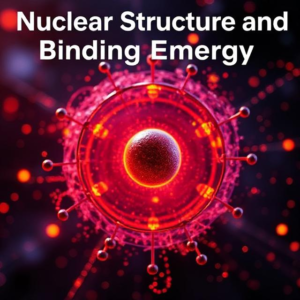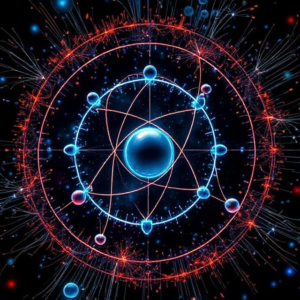De Broglie Waves and Matter Waves:
In the early 20th century, a scientist named Louis de Broglie came up with a very interesting idea: “What if matter (like electrons or even larger objects) also behaves like waves?”

This idea was revolutionary because, up until then, scientists thought of matter (things like electrons, protons, or even larger objects like cars) as having only particle-like behavior. But de Broglie proposed that, just like light (which was already known to have both particle and wave properties), particles of matter could also behave like waves.
Key Points:
- De Broglie waves are the wave-like behavior of matter (like electrons, atoms, etc.).
- Just like light has wave properties (like being able to bend around corners), de Broglie suggested that particles of matter (like electrons) can have wave-like properties too.
This was a new idea that helped lay the foundation for quantum mechanics.
How Does This Work?
- Wavelength of Matter Waves:
- According to de Broglie, every moving particle has an associated wavelength. This wavelength is called the de Broglie wavelength.
The de Broglie wavelength (
) of a particle can be calculated using the formula:
- h is Planck’s constant (a very small number).
- m is the mass of the particle.
- v is the velocity of the particle.
This equation tells us that the wavelength of a particle depends on its mass and velocity. Larger particles (like a baseball) have very small wavelengths, so they don’t show wave-like behavior in our everyday world. But very small particles (like electrons) have wavelengths that are significant and can show noticeable wave-like behavior.
- Wave-Particle Duality:
- De Broglie’s idea fits into the concept of wave-particle duality, which says that particles (like electrons) and waves (like light) can have both wave-like and particle-like properties.
- For example, light can behave like a wave (when it bends around objects), but it can also behave like a particle (photons, the little “packets” of light). Similarly, electrons (and other particles) can behave like both particles and waves.
Matter Waves (What Are They?)
When we talk about matter waves, we’re referring to the wave-like behavior that particles (like electrons, protons, or atoms) exhibit, as suggested by de Broglie.
Key Points:
- Matter waves are waves that are associated with particles of matter.
- These waves are not something we can see directly, but their effects can be observed in experiments, like the electron diffraction experiment.
How Do Matter Waves Behave?
- Interference: Just like waves of light or water, matter waves can also interfere with each other. When two waves meet, they can either add up (constructive interference) or cancel out (destructive interference). This behavior was demonstrated in experiments where electrons (particles) were shown to create interference patterns, just like light waves do.
- Diffraction: Matter waves also diffract, meaning they spread out when passing through small openings or around obstacles. This is another wave-like property. In fact, the famous double-slit experiment showed that electrons (which are particles) can produce interference patterns, just like light waves, showing that they also have wave-like behavior.
Real-Life Example: The Electron Diffraction Experiment
One of the key experiments that confirmed de Broglie’s idea of matter waves was the electron diffraction experiment. In this experiment:
- A beam of electrons (tiny particles) was passed through a crystal.
- The electrons created an interference pattern on a screen, something that is typical of waves, not particles.
This experiment showed that electrons (which were traditionally thought of as particles) could behave like waves, supporting de Broglie’s hypothesis.
Why Is This Important?
- Quantum Mechanics:
- De Broglie’s theory was a major step toward the development of quantum mechanics, the branch of physics that explains the behavior of very small particles, like atoms and electrons.
- It helps us understand why particles sometimes act like waves, and how they can exist in multiple states at once, until we measure them (known as quantum superposition).
- Electron Microscopes:
- De Broglie’s ideas are used in technologies like the electron microscope. Because electrons can behave like waves, we can use them to look at tiny objects (like viruses) that are too small to be seen with normal light microscopes.
Summary of Key Ideas:
- De Broglie Waves: De Broglie proposed that all matter (not just light) has wave-like properties.
- Matter Waves: Particles like electrons can show wave-like behavior, which was confirmed by experiments like electron diffraction.
- Wave-Particle Duality: Particles (like electrons) can behave like both particles and waves depending on the situation.
- Formula: The wavelength (
) of a particle depends on its mass and velocity, and is given by the equation
.
In Simple Terms:
- De Broglie Waves are the wave-like behavior of particles like electrons.
- This idea helped us understand that particles (like electrons) are not just little balls, but can also act like waves.
- These matter waves help explain things like electron diffraction and are crucial for understanding quantum physics.











